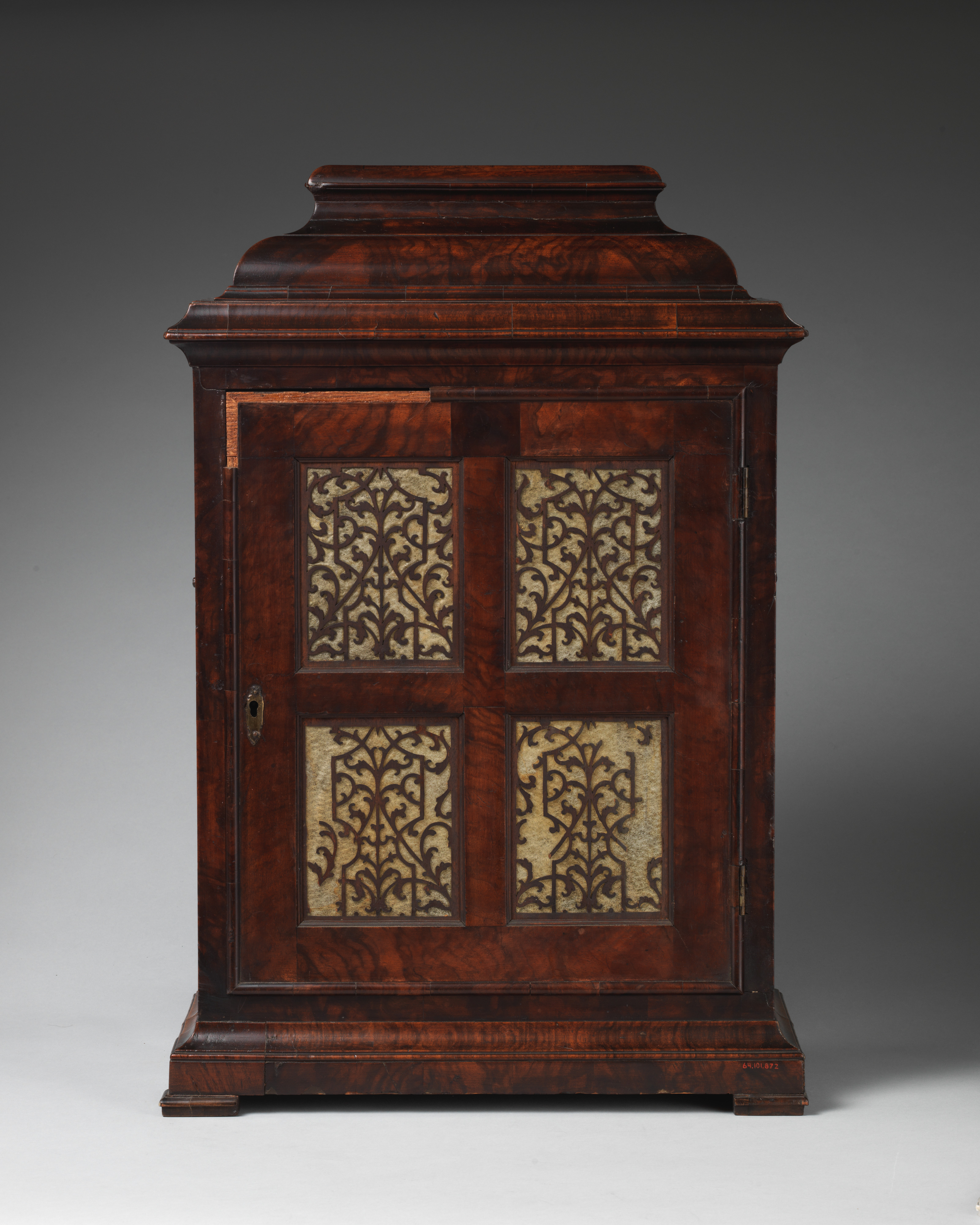Table or bracket clock
Clockmaker: George Graham British
Not on view
The eight-day movement of this clock has a verge escapement, a halfseconds-beating pendulum, and rack-and-pinion striking, and it strikes hours. It is unusual for its large size and for the thickness of its brass plates, which are held apart by eight latched pillars. The undecorated back plate is numbered 613. Apertures in the dial indicate the day of the month and allow a view of the oscillation of the false pendulum (ornamented with a sun image) that is connected to the real pendulum. The two smaller chapter rings above the chapter of hours are for the regulation of the pendulum (left) and for turning on or off the striking of the clock (right). Graham, a journeyman in the establishment of Thomas Tompion, married Tompion’s niece and was taken into partnership about 1704. He later inherited Tompion’s business and retained Tompion’s system of numbering the products of the workshop. Continuing Tompion’s work, Graham perfected the long-lived cylinder escapement for watches; he also invented the recoilless (or dead-beat) escapement for clocks as well as the mercurial pendulum, a solution for the problem of temperature compensation. He became a fellow of the Royal Society in 1730 and was buried near Tompion in Westminster Abbey.
Due to rights restrictions, this image cannot be enlarged, viewed at full screen, or downloaded.
This artwork is meant to be viewed from right to left. Scroll left to view more.





